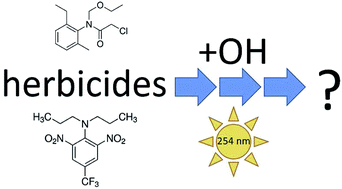Atmospheric OH oxidation chemistry of trifluralin and acetochlor
Abstract
Trifluralin and acetochlor are two nitrogen-containing current use herbicides. While both herbicides have been observed in the atmosphere and have the potential to undergo atmospheric oxidation before deposition to off-target areas, the atmospheric photooxidation chemistry of these species is poorly understood. We use an oxidative flow reactor to expose the two herbicides to increasing concentrations of OH radicals, detecting pesticides and products using an iodide chemical ionization mass spectrometer. We identify new oxidation products and propose photooxidation mechanisms for trifluralin and acetochlor. Both herbicides contain reduced organic nitrogen atoms, and their OH oxidation produces isocyanic acid. While aerosol was observed in the flow reactor only for acetochlor, our results indicate that OH oxidation of neither herbicide would contribute to secondary organic aerosol formation under typical ambient atmospheric conditions. However, high wall losses of both pesticides in the flow reactor suggests that partitioning to pre-existing aerosol may occur and enable subsequent transport in the atmosphere.

- This article is part of the themed collection: Organic Aerosols


 Please wait while we load your content...
Please wait while we load your content...